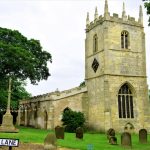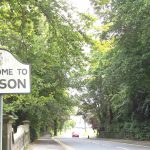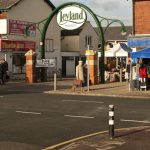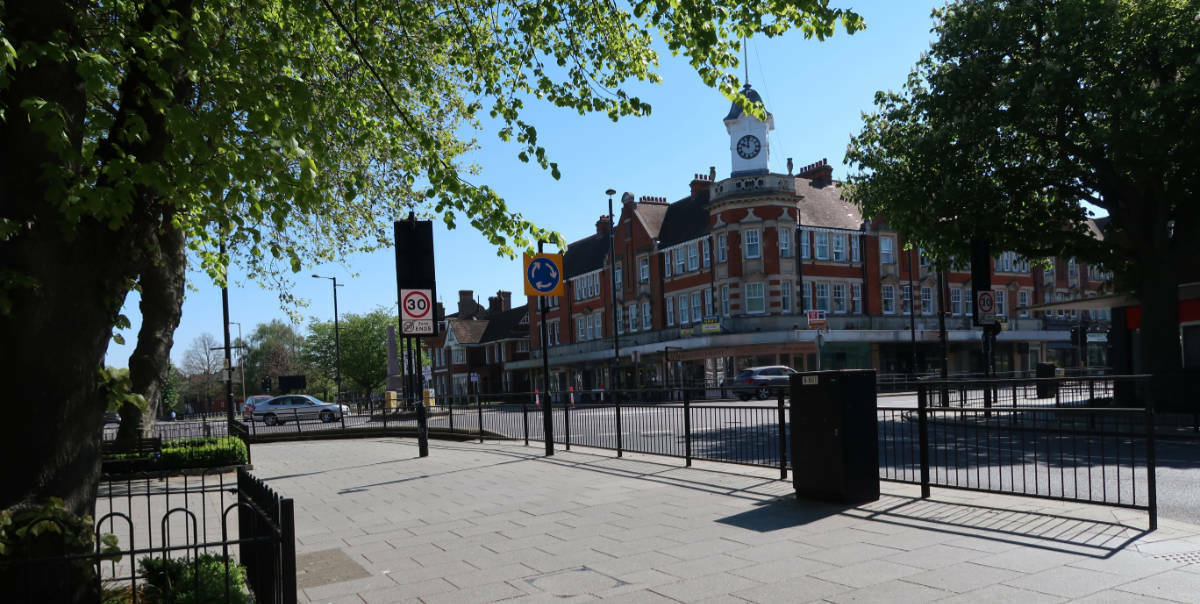
Brentwood in Essex is widely considered to be a place you live when you work in London but can’t afford to live in the city. This commuter town has a population of roughly 50 thousand people, an astonishing amount of greenery and open countryside, and makes for a delightful place to visit and explore on a Sunday afternoon.
With an illustrious history and royal connections, we couldn’t possibly have considered leaving Brentwood out of our tour of Great British towns and cities. Let’s indulge ourselves in a little Brentwood history, then talk through the attractions, and see if it is a prime holiday destination for our lovely readers.
The Early Days of Brentwood in Essex
During the Bronze Age, there was an entrenched settlement in the area that is now Weald Country Park. Slightly later than this, in the Iron Age, a hillfort was built by settlers in the same location.
Later, the Saxons would occupy the town as of the 1200s, when a church was built on the Roman Road between London and Colchester. Churches were either built to attract pilgrims towards an area or to establish a parish. St Osyth’s abbey was licensed to build a chapel in Brentwood in 1221 and was later given permission to hold a market and a fair there in 1227. This late settlement meant that Brentwood was not mentioned in the Domesday Survey of 1086.
Brentwood takes its name from ‘burned wood’, a name probably adopted in the 1700s judging by the old maps we have seen. Prior to this and on occasion later it was referred to it by the original name of Burnedwood. Brentwood is the Middle English pronunciation of Burned Wood. This name probably came from the constant need for charcoal creation through the ages. The clearing in the forest Brentwood was built on was likely once a charcoal burning clearing and the profession would be prolific here over time.
The early days of the town would have been quiet. It would have been no more than a few houses at first, with the church added to care for the few residents. Perhaps the original residents of Brentwood were travellers on the Roman road that got waylaid. The main profession would have been charcoal burning but we imagine there was a trade in timber, too, since this area was once covered by a huge forest. The Forest of Essex[i] was land that belonged to the king, and where he would have hunted when he was outside of London.
Interestingly, the earliest ever Christian ring made in Britain was found in the Brentwood area in the 1940s. This finger-ring is in the presence of the British Museum nowadays and has been dated to the 4th century. Already, Christianity had spread to the west in those early days.
The small village grew up around the crossroads formed on the Roman road by the pilgrims which took the River Thames to Canterbury route. The small chapel placed here was dedicated to St. Thomas the martyr and it is thought that at least a few of the early residents would have been his followers. The 13th century Thomas Beckett Chapel was frequented by pilgrims heading to Canterbury and can still be seen in the centre of the high street as a prominent ruin. To this day, one area of town is still named ‘Pilgrims Hatch’ in honour of the town’s history as a pilgrimage stopping point.
As the pilgrims came, the town would have grown to accommodate them. There would have been at least one inn, as well as stables for fresh horses. In the early days, brickmaking was a popular profession here, as was weaving. Furniture would have been carved from the trees of the great forest, and breweries would have thrived.
The last interesting thing to happen in that pre-medieval Brentwood was that two of the biggest names in the 1381 peasant’s revolt apparently met here. The timeline would put their meetings at 1381, evidencing the fact that Brentwood existed for a long time before it was granted the chapel and the fair in the 1200s. The Peasant’s Revolt came on the back of the Black Death. It saw unrest in large portions of the Southeast of England as the people protested the taxation by the king. Serfdom is not for everyone, it seems.
The two peasants in question were John Ball and Jack Straw, they would meet regularly in the area and were fast friends. One day, a tax collector named Brampton called they and another few men to account since one of them hadn’t been paying their taxes. The men refused to give Brampton, the tax collector, the cash, and a riot started. This riot spread like wildfire among the towns and villages surrounding London. Nobody wants to pay taxes to a king that doesn’t let them hunt in their own forest.
Let’s take a break there and talk about some of the fun trivia about Brentwood, instead.
Fun Facts about Brentwood
We always like to take a break and check out the best local trivia when we are writing a tour of a town, and Brentwood is no exception. Let’s talk about fun facts, interesting conversations, and things you can talk about safely at parties…
Fun Brentwood Trivia includes:
- Brentwood was once voted the 19th richest town in England.
- There is a Brentwood in Tennessee that isn’t a twin town, but that is a distant cousin.
- The countryside is about 200 yards from the centre of town. Also, the high street has some ruins in it.
- Brentwood is named as the site of the battle between the Emperor and Claudius in 44 AD in the book “Claudius the God”.
- In 1392, Richard I visited one of the oldest buildings in town, The White Hart inn/hostelry, which is now a nightclub.
- In 1788 there were 11 inns here. It is thought they could accommodate more than a hundred horses and visitors.
- In the 1500s one of the biggest brickmakers in town, one Thomas Munn, was hanged at the crossroads for stealing from the Yarmouth Mail. Hanging a body at a crossroads was particularly gruesome since it was believed the soul would never be able to find its way back to town again.
And on that cheery, wholesome note, let’s get back to Brentwood in Medieval Times. If you’d like more awesome titbits like this, you can find them by following us on Facebook.
Medieval Brentwood
During the 1500s Henry VIII reportedly visited Marygreen Manor on the London Road. It was owned by Henry Roper, who was once a gentleman caller of Catherine of Aragon’s. By the end of the 16th century, the town could stable 183 horses to account for the popularity the king’s attention brought upon the area.
In that same century, a protestant martyr named William Hunter was burned at the stake in 1555. His crime? He was sacked from his London job for refusing the mass, he was caught reading a bible for himself in the chapel and would not take the body or blood of Christ in the holy sacrament. He was sent to the bishop in London where he was sent back to Brentwood to be burned. Although this burning was not indicative of the town’s name, the irony probably wasn’t lost on them.
Nowadays, you can visit the Martyr’s Elm in Brentwood where his ashes were laid to rest. In a less gruesome twist of fate, the Brentwood School was opened two years after this, because we were enlightened enough to educate people, but still savage enough to burn them to death when they didn’t want to do as they were taught. The school were the ones to mark the place of William Hunter’s demise with a small plaque.
A few years later and in line with the town’s idealistic expectations, Thomas Munn, the brickmaker from the facts section, was hanged at the crossroads for robbing the mall.
The next two hundred years saw stable growth for Brentwood as it became a known coaching rest stop between London and the coast. Those heading to East Anglia would also travel through Brentwood, often stopping to enjoy the numerous inns here. In the early 18th century, Daniel Defoe mentioned Brentwood and passed comments on the excessive multitude of carriers and passengers there. It was a between-place. A rest-stop town. And this is what was responsible for much of its growth throughout the medieval period.
To this day, you can still find the odd Brentwood public house that dates all the way back to the pre-Industrial period.
Famous People from Brentwood
Before we delve into the Industrial and modern periods, let’s browse through some of the best known famous faces to have come from Brentwood over the years. Minus the criminals and the ones that got burned at the stake, of course.
Some of the famous faces from Brentwood include:
- James Argent, the former cast member of The Only Way is Essex before he got too old, is from here. Lewis Bloor, another from the same show, is from Brentwood, too.
- Model, TV personality, and star of (you guessed it) The Only Way is Essex, Amy Childs is from here.
- Lots of cricketers, including Andrew Clarke, Edward Banbury, and Robert Henry Newbolt.
- Sarah Kane, the author of 4:48 Psychosis and many other splendid delights, was a Brentwood resident.
- Singer/songwriter Pixie Lott is Brentwood born.
- Jodie Marsh, the model with the big… personality… is from Brentwood.
- Stephen Moyer, aka Bill Compton from the ace Vampire TV Drama True Blood, is a Brentwood lad.

Image: s_bukley/Shutterstock.com
Considering the size of the town, Brentwood probably has more famous faces per square metre than London does. On that much deserved cheery note, let’s turn our attention to the Industrial era for Brentwood.
Modern Brentwood
For most of the 19th century, Brentwood’s population was under the 5k mark. By the start of the 20th century, Brentwood was still small. In 1899 it grew to contain Hutton, Ungave and South Weald. The church became a cathedral in 1917, just after several of the young men from the area were sent off to fight in the first World War.
During the Second World War, over 1000 bombs were dropped on Brentwood. Over 5,000 houses were destroyed, with 389 people being injured and 43 dead. Despite all of these bombings, it was still considered a safe enough place to evacuate London’s children. In September of 1939, some 6,000 children arrived in Brentwood, and that was just in a single season.
After the war, Brentwood went through a series of changes to become the place we know and love today. For example, the East India Company’s elephant training school closed down in 1959 and the site became the HQ of Ford Europe. The cathedral was updated and redeveloped right up until 1991 when it was finally finished.
In 1974 further changes were made to accommodate post-war London overspill. Ingatestom, Fryeming, Mountnessing, Doddinghurst, Blackmore, Navestock, Kelvedon Hatch and Stondon Massey all joined the greater urban district. The new townlands covered 36 thousand acres, an impressive landmass that included what was left of that once great forest.
Nowadays, Brentwood is a thriving market town that still retains its rural roots. The town is leafy, green, and surrounded by babbling brooks and beautiful summer meadows. At least until October, anyway.
Let’s review some of the best things to see and do in Brentwood, should you decide to go visit this placidly growing market town.
Attractions in Brentwood
So now that you know all about Essex’ best-kept secret, why not go there and check it out? Here are some of our favourite attractions in Brentwood to get you started off…
Historic sights and Landmarks
Brentwood Cathedral is by far the biggest landmark and historical point of interest in the town. This cathedral is the evolution of the church that was built here for the pilgrims, all the way back in the 12th century. As you can see, it still gets used today as a place of worship. It is thought that the whole town grew up because of the influence of this former chapel on those passing through. Now, it makes the perfect place to take a snapshot or two for IG.
Another landmark of note is the Mountnessing Windmill, which is the nearest Essex mill to London, which is found on the Roman road. This is a Grade II listed building with four floors and four spring sails. It operates two sets of millstones, capable of working harder than others. It is sometimes used to make flour, even to this day.
Let’s not bypass the chapel ruins that can be found in the middle of the shopping centre on the high street. It is technically classed as an open-air museum because of the opportunity to learn while you are there. The chapel once belonged to the followers of Thomas Beckett, which was almost a cult in its own right.
Galleries and Museums
Brandler Galleries is a local gallery that sells prints, paintings, and works of art, from local artists and from farther afield. They specialise in quality fine art, street art, and urban art. Otherwise, you can find a few pieces in Brentwood Museum, although it tends to focus on the history of the town and surrounding countryside, as opposed to the artists, found there.
Outdoor Attractions
Thorndon Country Park is a great place to explore. Bring the family and a picnic in summer, find a meadow and make yourself at home. In winter, explore frozen forests and enjoy nature walks, spotting where animals might be hibernating in the bad weather. Kids love to explore this massive country park, while adults love the peace of it, away from the hustle and bustle of the town. The best part is that there’s no entry fee, so go nuts. It is also home to the Gruffalo Trail which is great fun for kids of all ages!
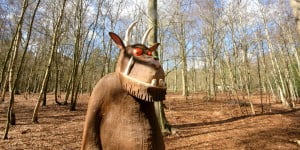
Image: Lee10C/Shutterstock.com
If the Thorndon visitor centre trying to ply you with gifts puts you off a little, then head out to the Weald Country Park, instead. Brentwood is nothing if it isn’t countrified. The Weald has over 520 acres of all-natural space. Go in high summer at dusk and you might see foxes and deer.
Attractions for Kids
Hopefield Animal Sanctuary is one of the top attractions in town. They have 53 acres of farmland, meadows, and woods to explore, where they treat some 500 wounded or ill-treated animals. They have been running this sanctuary since 1983, so much so that it has become a local legend. Visit often and give them all your money because they do great work.
While we are on the topic, they have an Old MacDonald’s Farm on the outskirts of town. This is a petting zoo slash fun place for younger kids to come and learn about farms and animals. It’s really just a play area out in the country, but kids and parents alike always have a blast. Petting the young animals is always fun and the bunnies are so soft!
King George’s Playing Fields are a sort of adventure playpark area where the kids can go daft. This area includes formally laid out gardens, sporting facilities, and 73 acres of open playing fields for you to choose your sport in. The best part is the unique sensory garden aimed at blind people.
Sports and Recreation
Brentwood has its own Brentwood Park Ski and Snowboard Centre, where you can go along and have a heap of fun skiing on their dry slope. Take lessons in skiing or snowboarding, or just enjoy throwing yourself down the hill and getting the lift back up again. It’s where most of the cool kids can be found hanging out. They do family passes to make for a slightly less pricey experience.
The Brentwood Town Football Club are the only big team in town, although they also have Brentwood Youth AFC here. The team plays at the Brentwood area, which is a large patch of grass rather than a stadium.
If football isn’t your sport, then have no fear, there are at least three golf clubs for you to choose from. Select the Brentwood Golf Club, the Bentley Golf Club, or the Thorndon Park Golf Club, for an experience that matches every price point.
If you are looking for somewhere to play some sports of your own, try the Brentwood Centre. It has courts to rent. It runs regular group workout sessions, comes with a pool, and has a gym attached so you are able to get the workout you need, even if you are on holiday.
Other Notable Brentwood Sights
Think you have seen it all? Think again. Brentwood and the surrounding countryside are jam-packed with attractions, just waiting for you to discover them. If you are in town for a day or two, check out some of these:
- A visit to Brentwood Brewery Co is on the cards for the adults. They have a tap room to indulge in at the end of your tour.
- The Warley Place Nature Reserve is yet another outdoor option here.
- Visit Barnard’s Farm Gardens, because who doesn’t love a good garden centre.
- Stop by Brentwood theatre or catch Brentwood Live in the summer.
- Don’t forget about Calcot Hall farm and their 120 acres, either.
With so much to explore, there’s no reason to stay home this summer, is there?
How to get to Brentwood?
Let’s not leave out how you get to Brentwood. We can’t have a bunch of Londoners roaming around the countryside unchecked…
By Road
Brentwood is just off the M25, you can’t miss it.
By Rail
Brentwood Railway Station is on the London line.
By Air
London City Airport is your closest airport.
By Sea
Well if you like a bit of a challenge or are just feeling adventurous then you could anchor up off of Bell Wharf Beach (it’s at Leigh on Sea). Then get a boat ashore and take a taxi for the 16-mile journey. Not the best way to get here but still possible.
Still Stuck for a Holiday Destination?
If you are desperate to get out and explore England, then we have plenty of tourist guides that will take you beyond Brentwood on our website. Don’t forget to follow us on Instagram, too.
[i] https://en.wikipedia.org/wiki/Forest_of_Essex
